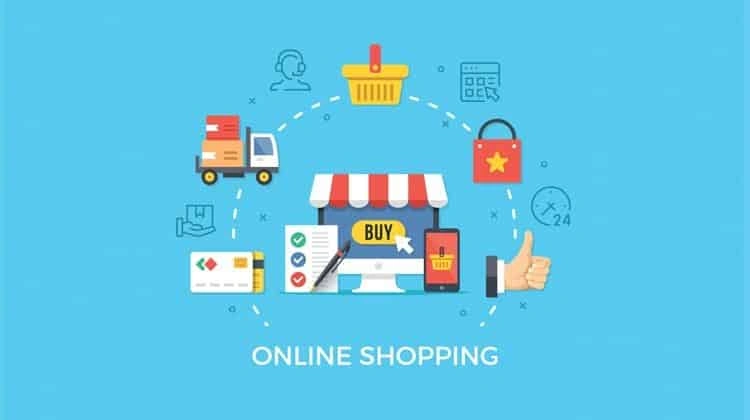Core E-commerce Marketing Strategies: Pillars of Online Success
Pillar 1: Search Engine Optimization (SEO) – The Foundation of Organic Traffic
SEO is about making your online store visible on search engines like Google without paying for clicks. It builds long-term, sustainable traffic.
- On-Page SEO for E-commerce:
- Keyword Research: Identify high-intent keywords buyers use (e.g., “buy [product name] online,” “[product] price,” “best [product review]”). For markets like Pakistan, consider local language variations (Roman Urdu, Urdu).
- Optimized Product & Category Pages: Write unique, descriptive, keyword-rich titles, meta descriptions, and product descriptions.
- Image Optimization: Use descriptive file names and alt text for all product images. Compress images for faster loading.
- Schema Markup (Structured Data): Implement Product, Review, Offer, and BreadcrumbList schema to help search engines understand your product details and display rich snippets (like star ratings and prices) in search results.
- Technical SEO:
- Site Speed & Mobile-Friendliness: Crucial for user experience and rankings. Use Google PageSpeed Insights and ensure your site is responsive.
- Clean URL Structure: Use logical, keyword-rich URLs (e.g., /category/product-name).
- XML Sitemaps & Robots.txt: Ensure search engines can crawl and index your site effectively.
- Canonical Tags: Prevent duplicate content issues, especially with faceted navigation (filters).
- Content Marketing (for SEO):
- Blog Posts: Create buyer guides, “how-to” articles, product comparisons, and FAQs related to your products to attract informational queries and build authority.
- Video Content: Embed YouTube tutorials or product reviews.
- Off-Page SEO & Link Building: Earn high-quality backlinks from reputable websites to boost your domain authority.
Pillar 2: Paid Advertising (PPC) – Immediate Visibility & Scalable Sales
PPC allows you to pay to appear at the top of search results and on various platforms, driving instant, targeted traffic.
- Google Ads (Search, Shopping, Display, YouTube, Performance Max):
- Search Campaigns: Target high-intent keywords with text ads. Essential for capturing direct demand.
- Google Shopping Campaigns (Product Listing Ads – PLAs): Highly visual ads displaying product image, price, and store name. Critical for e-commerce, as they are often the first thing buyers see. Requires a Google Merchant Center feed.
- Display Campaigns: Use visual banner ads for brand awareness and, crucially, retargeting (showing ads to visitors who didn’t convert).
- YouTube Ads: Leverage video for product demos, unboxing, and brand storytelling.
- Performance Max: Google’s automated campaign that leverages all its channels to find conversions.
- Social Media Ads (Meta Ads, TikTok Ads, Pinterest Ads):
- Facebook & Instagram Ads: Powerful for detailed targeting (demographics, interests, behaviors), custom audiences (website visitors, customer lists), and lookalike audiences. Ideal for driving traffic, leads, and direct conversions.
- TikTok Ads: Great for reaching younger, trend-driven audiences with short-form video ads.
- Pinterest Ads: Excellent for visually driven products (fashion, home decor) as users are often in a discovery/planning mindset.
- Retargeting/Remarketing: Show tailored ads to users who previously visited your website but didn’t complete a purchase (e.g., abandoned cart reminders). This is one of the highest ROI paid strategies.
Pillar 3: Social Media Marketing – Engagement, Community & Social Commerce
Social media is your platform for brand building, direct engagement, and increasingly, direct sales.
- Platform Selection: Focus on where your target audience spends their time (e.g., Facebook and Instagram for broad reach, TikTok for Gen Z/Millennials, Pinterest for visual discovery, YouTube for video content).
- Content Strategy:
- Product Showcases: High-quality photos, videos, carousels.
- Lifestyle Content: Show products in real-life use, inspiring customers.
- User-Generated Content (UGC): Encourage and share customer photos/videos and reviews.
- Behind-the-Scenes: Build authenticity and connection.
- Interactive Content: Polls, quizzes, Q&A sessions.
- Influencer Marketing: Collaborate with relevant micro, macro, or celebrity influencers to reach their engaged audiences and build trust.
- Social Commerce Features: Leverage native shopping features like Facebook Shops, Instagram Shopping, product tagging in posts, and direct messaging for inquiries/orders (e.g., WhatsApp Business in Pakistan).
- Community Building: Respond to comments and messages promptly, run contests, and create groups to foster brand loyalty.
Pillar 4: Email Marketing – Nurturing Leads & Driving Repeat Purchases
Email marketing remains one of the highest ROI channels for e-commerce.
- Automated Flows:
- Welcome Series: Greet new subscribers, introduce your brand, offer a first-purchase discount.
- Abandoned Cart Reminders: Send a series of emails to remind customers about items left in their cart.
- Post-Purchase Follow-ups: Thank customers, provide shipping updates, ask for reviews, and recommend related products.
- Win-Back Campaigns: Re-engage inactive customers with special offers.
- Segmentation: Divide your email list into segments based on purchase history, Browse behavior, demographics, and interests for highly targeted campaigns.
- Personalization: Address customers by name, recommend products based on past purchases or Browse, and send birthday discounts.
- Promotional Campaigns: Announce new arrivals, sales, and exclusive offers.
Pillar 5: Content Marketing – Attracting, Educating & Building Authority
Content marketing goes beyond product descriptions to provide value, build trust, and attract organic traffic.
- Blog Posts: “How-to” guides, product comparisons, gift guides, industry trends, and problem-solving articles relevant to your products.
- Video Content: Product tutorials, unboxing, brand story videos, live streams.
- Infographics & Visual Guides: Simplify complex information visually.
- Buyer Guides: Help customers make informed decisions, positioning your brand as an expert.
- User-Generated Content Campaigns: Encourage customers to create and share content related to your products.
Pillar 6: Conversion Rate Optimization (CRO) – Turning Visitors into Buyers
CRO focuses on optimizing your website to convert existing traffic into customers.
- Website UX/UI: Ensure intuitive navigation, clear search functionality, and a seamless mobile experience.
- Clear Calls-to-Action (CTAs): Use strong, action-oriented buttons (e.g., “Add to Cart,” “Shop Now,” “Buy Now”).
- Trust Signals: Display customer reviews, security badges (SSL), clear return policies, and contact information prominently.
- Streamlined Checkout Process: Minimize steps, offer guest checkout, and display all costs upfront.
- A/B Testing: Continuously test different elements (headlines, button colors, layouts) to see what performs best.
Pillar 7: Customer Experience (CX) & Retention Strategies
Happy customers are your best marketing tool. Retaining existing customers is often more cost-effective than acquiring new ones.
- Exceptional Customer Service: Provide quick, helpful, and empathetic support through live chat, email, phone, and social media.
- Loyalty Programs: Reward repeat customers with points, discounts, or exclusive access.
- Personalization: Beyond email, use website personalization to recommend products based on Browse history.
- Post-Purchase Follow-ups: Solicit reviews, offer post-sale support, and provide relevant content.
- Referral Programs: Encourage satisfied customers to refer new ones by offering incentives.
Integrating Your Strategies for Maximum Impact
The true power of e-commerce marketing lies in integrating these strategies. An omnichannel approach ensures a consistent brand message and customer experience across all touchpoints.
- Data Analytics: Use tools like Google Analytics, Google Search Console, and platform-specific insights to track performance, understand customer behavior, and make data-driven decisions.
- CRM (Customer Relationship Management) Systems: Manage customer data, segment audiences, and personalize interactions.
Conclusion: Your Blueprint for E-commerce Growth
The e-commerce landscape is dynamic and competitive, but with a well-planned and executed marketing strategy, your online store can flourish. By focusing on a holistic approach that combines strong SEO, targeted paid advertising, engaging social media presence, personalized email campaigns, valuable content, optimized conversions, and exceptional customer experiences, you’ll be well-equipped to attract, convert, and retain customers.
Remember, marketing is an ongoing process of testing, learning, and adapting. Continuously analyze your performance, stay updated on industry trends, and always put your customer at the center of your marketing efforts to build a thriving e-commerce brand.



